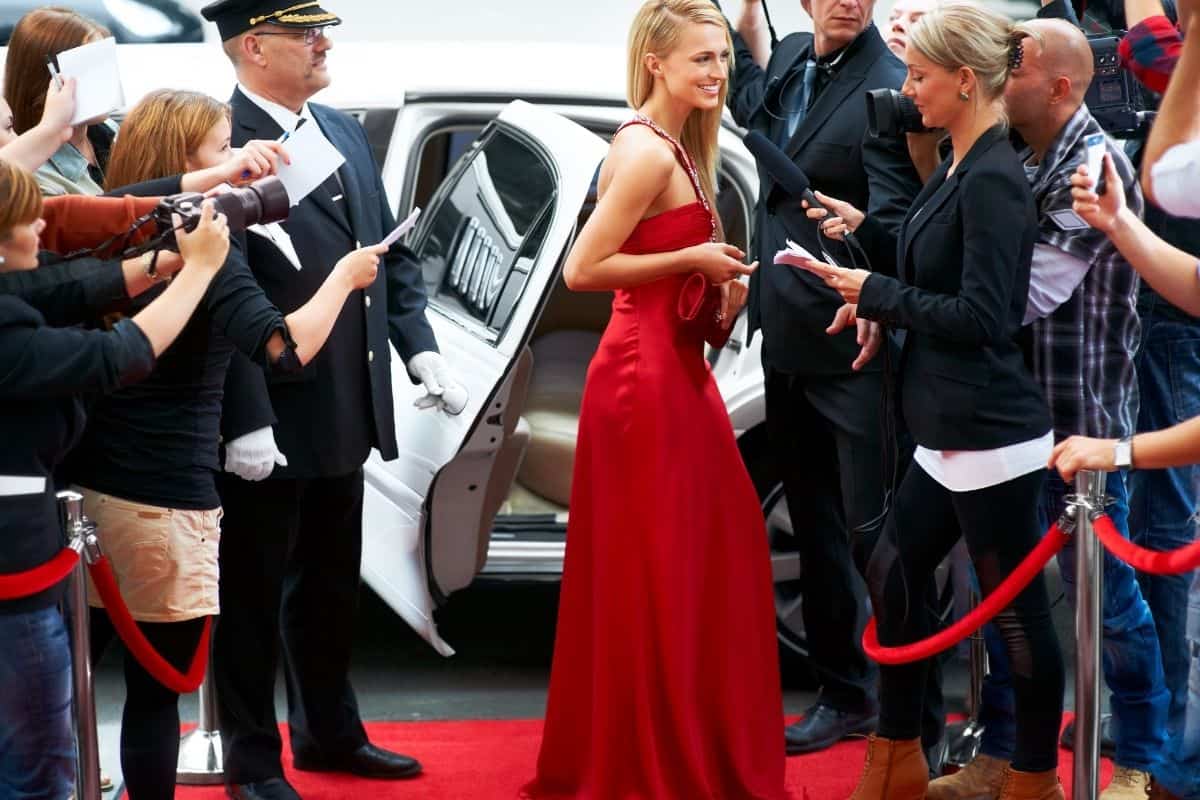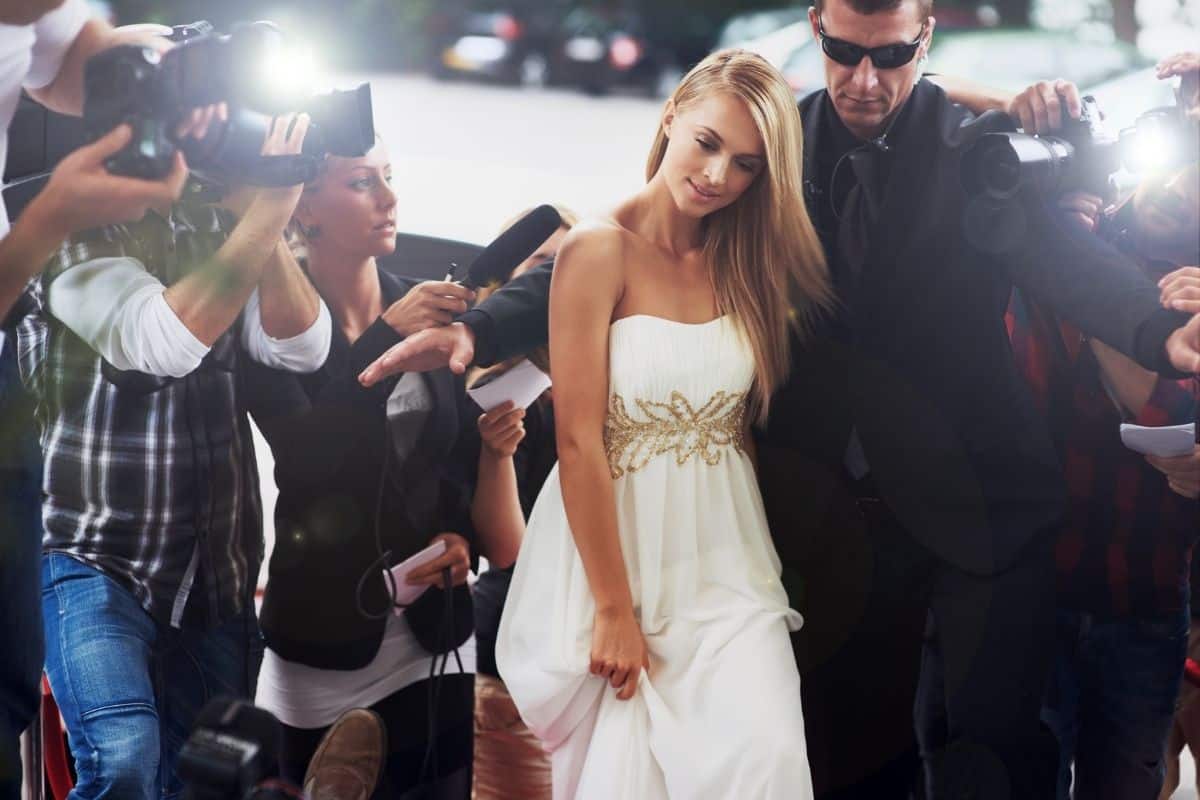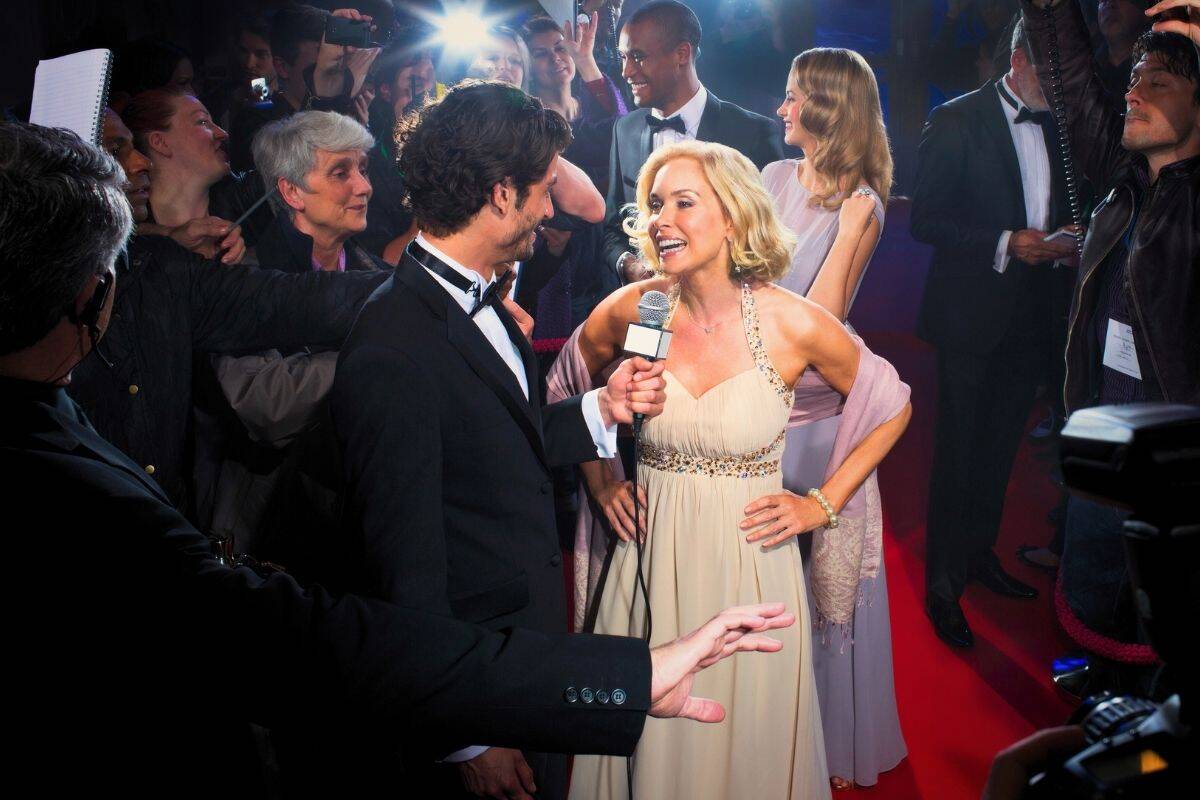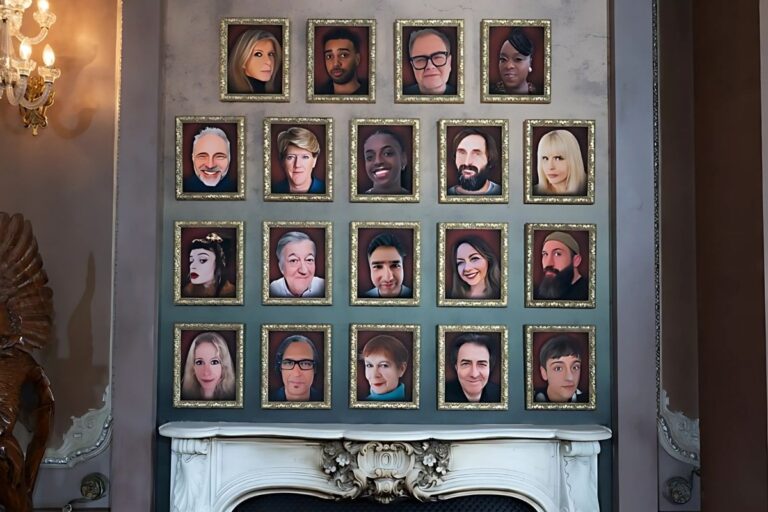You’re sitting in traffic, looking at your phone, and there they are again. Another celebrity scandal. Another red carpet photo. Another mansion tour. We just can’t stop gawking, can we?
I recall my friend Jessie went mental once after she saw Tom Hardy at a coffee shop in Primrose Hill. She was unable to talk right for, like, 20 minutes. That is the power of fame, to reduce grown adults to giggling messes over someone they’ve never even met in real life.
But seriously, what makes someone a celebrity anyway? The answers have changed so much in the past decade that my mum struggles to understand why I know who half these people are. She will enquire, “What makes them famous? And sometimes the truthful response is “Well, they’re just … famous.”
How Fame Actually Works Now
Traditional fame made sense. Film stars acted brilliantly. Musicians sang songs people loved. Athletes broke records. Simple, yeah? You did something special and you were recognised for it.
And then reality TV came along and mucked everything up. Suddenly, people were getting famous for arguing on camera or dating other celebrities. The Osbournes bared their chaotic family life to us and became everyone’s household name. Big Brother contestants went from stacking shelves in Asda to selling out nightclub appearances.
Social media proper blew the whole thing wide open. My cousin’s neighbour, who does makeup tutorials in her bedroom, had 800,000 followers on TikTok by posting them. She’s making more money than her dad, who’s been an engineer for thirty years. That would have sounded mental 15 years ago.

There are new types of celebrities now who have never been in a recording studio or on a film set. You’ve got YouTubers filling stadiums. Instagram models are being welcomed to Paris Fashion Week. Podcast hosts are more powerful than journalists of the past. Fame no longer needs traditional talent; it just requires attention, and attention can come from anywhere.
The connecting thread? Sustained public interest. Whether people recognise you for winning an Oscar or starting a viral dance challenge, it doesn’t really make much difference now. Fame is fame, and it unlocks the same doors no matter which entrance you take to arrive.
The Journey Nobody Talks About
Right, let’s be honest about how celebrities become famous. The overnight success story is usually not true. Most famous people worked for years amid rejection, poverty and existential doubt before anything clicked.
Actors attend hundreds of auditions where they’re told they’re too tall, not blonde enough, too blonde, the wrong energy, or the wrong face. Musicians do gigs in grotty pubs where the only person listening is the sound guy, and he’s on his phone. Athletes train six hours a day whilst trying to work part-time jobs to buy the equipment.
It’s hardly ever the result of being the most talented. And timing is more important than anyone will acknowledge on the record. Just being in the right room at the right time. Someone important sees your work when they are actually looking for exactly what you are doing. Luck has a lot to do with it, which is why successful celebrities get defensive when you tell them they’re lucky, but they are. Talented AND lucky beats just talented every time.
Social media upended this game, too. From your bedroom, you can grow an audience without needing gatekeepers’ permission. No agents, no casting directors, no record labels necessary. Film yourself being funny or helpful or interesting, and if enough people care, you’re famous. Simple as that. Well, simple in theory. In reality, millions of people are doing the same thing you’re doing.
My neighbour’s daughter does those satisfying cleaning videos on TikTok. She has two million followers, and brands send her free products. She’s seventeen. This is exactly how famous people actually work now, and traditional celebrities hate it because it undermines the idea that fame requires special qualities they possess.
Living the Dream (Or Not)
The celebrity lifestyle looks brilliant from the outside. First-class flights. Designer freebies. Invitations to parties at actual castles. Never paying for drinks. These perks exist, and they’re real. I’d be lying if I said they weren’t appealing.
But here’s what nobody mentions until they’re having a breakdown: you lose anonymity completely. Every single time you leave your house, someone might photograph you. Bad hair day? It’s on Mail Online within hours. Argument with your partner? Strangers online are discussing whether you should split up. Put on a bit of weight? Prepare for articles analysing your body.
A friend works in PR and handles a few proper A-listers. She told me one of them hasn’t been able to take their kids to a normal playground in five years because, within minutes, other parents are filming them and posting it online. Imagine that. Your children can’t play on swings without ending up on social media. That’s grim.
The pressure to stay relevant is relentless, too. Actors panic about gaps between projects. Musicians stress about their next album matching their last one. Social media personalities watch their engagement metrics obsessively because a few bad months could end everything. There’s no job security in fame.
Money helps with lots of things, obviously. But it doesn’t fix strangers’ feeling entitled to your time and attention everywhere you go. Wealth can’t buy back privacy once you’ve lost it. Some celebrities say they’d trade the money for anonymity, though most don’t actually mean it.
Property Portfolios That’ll Make You Sick
When you’re pulling in millions, you’ve got to put it somewhere. Property makes sense, everyone needs housing, and celebrity houses appreciate in value whilst serving as actual homes. Win-win, yeah?

Except celebrity houses aren’t normal houses. They’re massive statements of wealth that cost more than entire streets in normal towns. The most expensive celebrity houses include Beyoncé and Jay-Z’s Malibu place, which costs £157 million. That’s not a typo. One hundred and fifty-seven million pounds for a house. It’s 40,000 square feet of concrete and glass designed by a Japanese architect. Most people will never see inside it, which seems a bit pointless, but hey, it’s their money.
These massive estates aren’t always about showing off, mind you. When you can’t pop to Tesco without causing a scene, living behind gates on ten acres starts making practical sense. The money buys distance from the public attention that made you rich enough to afford the distance. Circular, innit?
Some celebrities flip houses as investments. Ellen DeGeneres has bought and sold dozens of properties, making millions in the process. Others settle somewhere properly. George Clooney’s had his Italian villa on Lake Como for years. He actually uses it as a retreat, which feels more sensible than owning twelve houses you visit twice yearly.
Not every celebrity lives in a palace, obviously. Plenty have relatively normal homes, though “normal” by celebrity standards still means a few million quid. The properly wealthy ones own multiple properties scattered across countries, which seems excessive but also sounds quite nice if I’m honest.
The Fashion Machine
Walk down any red carpet and you’re staring at some well-planned theatre. Every dress, every suit, every piece of jewellery: they have all been chosen weeks ahead by people whose actual job is to make famous people look fabulous.
Red carpet fashion exists in this weird symbiotic relationship with celebrity culture. Designers loan out clothes to celebrities for the exposure. Stylists pull together looks that match brand partnerships. Photographers take pictures that magazines use for weeks. It’s a deal that works well for all, and everyone involved knows it is essentially advertising presented as art.
Best celebrity stylists are famous in their own right. Law Roach, who styles Zendaya and made news when he took a short hiatus from styling in 2023. Margot Robbie and Dakota Johnson are styled by Kate Young, who is name-checked nearly as often on Vogue’s pages as the celebrities she dresses. These aren’t the kind of people who throw pretty dresses on famous people; they’re choreographing stories with clothes.
Zendaya’s approach to dressing during press tours tells stories that complement her films. Her ensembles for Dune had a robot theme. Spider-web prints for Spider-Man. It’s smart and it draws attention, which is all that matters. And how Billie Eilish had made statements about body image before completely switching her style, which generated even more attention. It’s all calculated, even when it looks spontaneous.
The best stylists know body types, colour theory and fashion history while dealing with multiple relationships with dozens of design houses. They collaborate with VIP teams to lock down custom pieces months ahead of events. To pull off a red carpet moment, many people need to work in coordination – the stylist, the celebrity, the designer’s atelier, the jewellery houses and the shoe designer. It’s complicated.
Fashion is part of the brand for a celebrity. Your attire speaks volumes about who you are. Timothée Chalamet’s avant-garde choices have cast him as a risk-taker. Kate Middleton mixes high street with designer, making her seem relatable. Harry Styles breaks gender codes in menswear, defying all those macho norms. These choices are deliberate.
The Money Question Everyone Wonders About
How much do celebrities get paid? The answer varies so wildly that generalising becomes pointless, but let’s try anyway because we’re all nosy about this.
The highest-paid film actors command twenty million quid per film. Top musicians make tens of millions from tours, though streaming and album sales add relatively modest amounts on top. But those figures represent the absolute peak. Most working actors earn middle-class wages from a combination of roles, commercials, and voiceover work.
Musicians make most money from touring, not recorded music, and touring is exhausting, poorly paid work for everyone except headliners. The bassist in your favourite band probably shares a tour bus with eight other people and eats garage sandwiches between gigs.
Social media created entirely new income streams. Influencers charge thousands per sponsored post. Top-tier personalities command six figures for major campaigns. Reality TV stars make money from nightclub appearances they literally get paid to show up and drink for a few hours. Some earn more from one night at a Manchester club than I make in three months.
Celebrity endorsements remain huge earners. Sports stars especially leverage fame into deals with athletic brands, watches, and luxury goods. Cristiano Ronaldo makes more from endorsements than from playing football. His social media following lets brands reach hundreds of millions through one post.
The wealth gap within celebrity culture is massive, though. A handful accumulate genuinely obscene wealth, whilst thousands of working professionals in entertainment struggle to pay rent between jobs. That Instagram influencer with two million followers might live in a shared flat, funding their lifestyle through credit cards and hope.
The Secret to Perfect Photos
Ever wondered how celebrities always look good in photos, whilst your passport picture makes you question your entire existence? It’s not genetics or magic. It’s knowledge, practice and an outrageous amount of behind-the-scenes work.
Professional celebrities get photographed thousands of times a year. Over time, they discover exactly which angles work best for their face, what poses enhance their body and how to adjust themselves in an instant when cameras are around. Ariana Grande knows her left side photographs better. Kendall Jenner has perfected a pose that creates curves without looking forced.

Lighting is one of those things that has a huge impact that ordinary people do not notice. Red carpets use carefully positioned lights to eliminate shadows and create flattering illumination. When celebrities share selfies online, they’re doing so with ring lights or sitting close to a window for the best natural light. Professional photographers use multiple light sources, reflectors, and diffusers to make subjects look their absolute best.
Then there’s the prep before photos happen. Professional hair and makeup take hours. Stylists choose clothes that will photograph well, avoiding patterns which look strange on camera and colours that wash out under the light. Some celebrities undergo even minor cosmetic procedures only to look better in photos. Botox prevents squinting, and fillers optimise facial proportions for the camera.
The actual posing involves tricks most of us never learn. Angling your body away from the camera makes you appear slimmer. Your jawline is created by pressing your tongue to the roof of your mouth. There’s something more genuine about the sort of smile that engages muscles around your eyes than just a grin. Crossing legs at the ankle creates length.
Post-production plays a role, too. Professional photos get edited colour correction, minor blemish removal, and lighting adjustments. But the heavy-handed airbrushing of the 2000s has fallen out of favour. Modern editing aims for polished rather than fake, though Instagram influencers didn’t get that memo, apparently.
I once watched a behind-the-scenes video of a celebrity magazine shoot. They took 400 photos to get five usable ones. The celebrity looked gorgeous in all of them to my eyes, but apparently, slight differences in expression and lighting made 395 of them unusable. That level of perfectionism is standard in that world.
Royal Blood Nobody Mentions
Here’s something odd: loads of celebrities who are royal actually have legitimate connections to historical royalty. Not metaphorical Hollywood royalty actual genealogical links to kings and queens.
Beyoncé is Queen Elizabeth II’s 25th cousin once removed through shared French royal ancestry. Johnny Depp is connected to the late Queen through Edward III as her 20th cousin. Brad Pitt descends from Henry II of England. These aren’t made-up publicity stunts. Genealogists have traced these lineages through centuries of records.
The connections make sense mathematically. European monarchs had loads of children, many of whom had their own large families. Over twenty or thirty generations, you end up with millions of descendants scattered worldwide. Many people of European descent probably have some royal connection if they trace back far enough, though most can’t afford professional genealogists to prove it.
Some celebrities have more direct connections. Tilda Swinton comes from one of Scotland’s oldest noble families. Christopher Guest is actually a baron, making his wife Jamie Lee Curtis a baroness. These aren’t honorary titles, they’re legitimate inherited nobility that comes with actual legal standing.
The revelation often surprises the celebrities themselves. Danny Dyer found out on Who Do You Think You Are? that he descended from Edward III. His reaction to proper working-class pride at having “royal blood” became one of British television’s most memorable moments. You could see it meant something to him, even though it doesn’t actually change anything about his life.
Most celebrities don’t bang on about these connections. They’re interesting footnotes rather than defining characteristics. Meghan Markle had royal blood before marrying Prince Harry, though that fact got buried beneath the novelty of an American actress becoming an actual duchess. The existing royal connection made the whole thing slightly less fairy tale and slightly more “well, she was already sort of one of us.”
The Reality Behind It All
Celebrity culture thrives on presenting a polished image. But behind that carefully curated facade lives remarkable complexity. These are people navigating extreme circumstances most of us will never face, constant scrutiny, bizarre expectations, and pressure to build personal brands from their own lives.
Social media made celebrity culture more accessible yet somehow less human. We see more of celebrities’ lives than ever before, but those glimpses are carefully curated content designed to maintain specific images. The authenticity we crave is actually another performance, just with different costumes.
Mental health struggles plague celebrity communities at higher rates than the general population. The combination of pressure, scrutiny, irregular work, and isolation creates perfect conditions for anxiety and depression. More celebrities speak openly about these struggles now, though stigma persists, and fans often don’t want to hear their idols are struggling.
Not everything about celebrity life is negative, obviously. Getting paid well to do creative work you love is remarkable. The opportunities to travel, meet fascinating people, and experience things ordinary folk never will remain genuine perks. For many celebrities, the tradeoffs are worth it. For others, they realise too late that fame wasn’t what they actually wanted.
Perhaps the most human truth about celebrities is this: despite the wealth, the fame, the designer clothes and expensive houses, they face many of the same struggles as everyone else. They worry about their careers, their relationships, and their families. They get insecure about their looks and talents. They make mistakes and struggle to fix them.
The only real difference is that they do it whilst millions of people watch, judge, and form opinions about every choice they make. Whether that tradeoff is worth it depends entirely on the individual celebrity, and even they sometimes change their minds about the answer.
Understanding celebrity culture means recognising it as a strange, modern phenomenon that says as much about us as audiences as it does about the famous people we watch. We create celebrities through our attention, our money, and our fascination. They wouldn’t exist without us choosing to care about their lives.
That relationship between celebrity and audience keeps evolving as media changes and new platforms emerge. But the fundamental human interest in watching exceptional people do exceptional things or sometimes just ordinary things in extraordinary circumstances seems hardwired into us. Celebrities are modern mythology, living legends we create and sustain through our collective attention.
Whether you’re casually interested or properly obsessed with following celebrity news, Celebrity Talk keeps you connected to the latest developments in entertainment, fashion, and the people who shape popular culture. Because let’s be honest we’re all a bit nosy about how the other half lives, and there’s nothing wrong with that.















